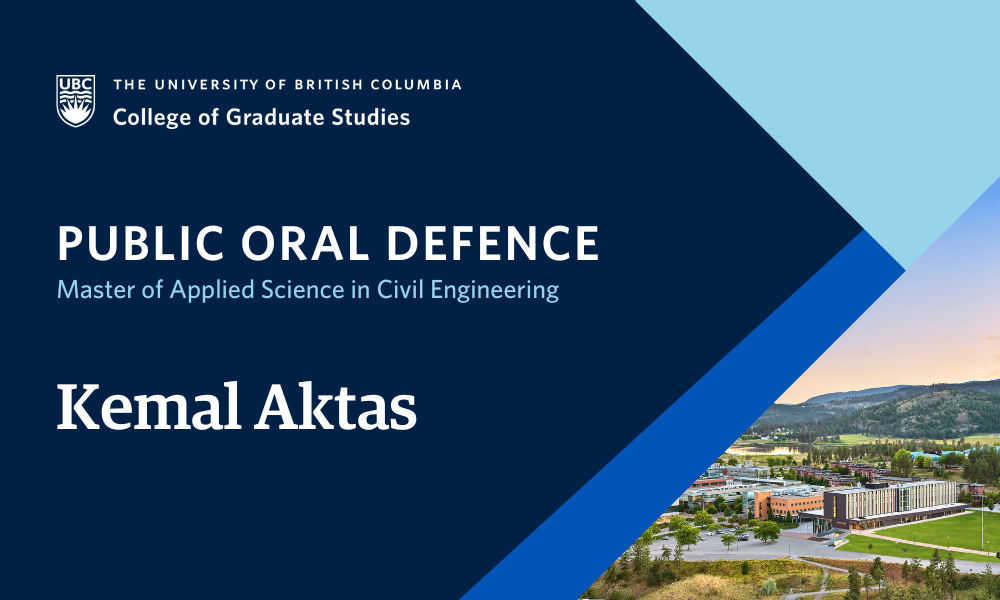
- This event has passed.
Thesis Defence: Adsorption Pretreatment of Hydrothermal Liquefaction Aqueous Stream from Mixed Sludge for Enhanced Biological Treatment
April 15 at 9:30 am - 1:30 pm

Kemal Aktas, supervised by Dr. Cigdem Eskicioglu, will defend their thesis titled “Adsorption Pretreatment of Hydrothermal Liquefaction Aqueous Stream from Mixed Sludge for Enhanced Biological Treatment” in partial fulfillment of the requirements for the degree of Master of Applied Science in Civil Engineering.
An abstract for Kemal Aktas thesis is included below.
Defences are open to all members of the campus community as well as the general public. Please email cigdem.eskicioglu@ubc.ca to receive the Zoom link for this defence.
ABSTRACT
Wastewater sludge poses challenges due to its high volume, organic and inorganic hazardous components. Anaerobic digestion (AD) has been a conventional method for treatment and methane recovery from sludge; however, it suffers from low organic conversion efficiency and demands significant investments. Hydrothermal liquefaction (HTL) is a technology for biocrude oil generation from organic waste. However, HTL produces secondary products, such as an aqueous phase, solid waste (hydrochar), and predominantly carbon dioxide gas. Proper management of the aqueous by-product is crucial for commercializing HTL technology for sludge treatment. Given the high volume and soluble organic compounds that accumulate in sludge-derived HTL aqueous, on-site biological treatment represents a low-cost downstream treatment. However, the aqueous contains HTL by-products of protein, carbohydrate, and lipids in feedstock (sludge) with significant inhibition potential to downstream biological treatment processes.
This thesis investigated adsorption as a pretreatment to remove inhibitory compounds in HTL aqueous by-product. The research is divided into two parts: 1) testing biochar, hydrochar from the HTL process, and granular activated carbon (GAC) to find an optimum adsorbent and adsorption conditions, and 2) assessing adsorption effect on downstream anaerobic and aerobic biological treatment processes. GAC demonstrated superior adsorption capability (184 mg/g) for chemical oxygen demand (COD), outperforming biochar (44 mg/g) and hydrochar (42 mg/g). The adsorption of COD onto adsorbents followed the Freundlich isotherm and pseudo-second-order kinetics. The adsorption process was favored by higher temperatures and a neutral pH environment. GAC exhibited high efficiency in removing potentially inhibitory compounds, including COD (up to 66%), total phenolics (up to 94%), and cyclic ketones (up to 95%). Simultaneously, it retained valuable volatile fatty acids for downstream methane recovery. At GAC concentrations of 5-100 g/L, compared to un-pretreated HTL aqueous, methane yield enhancements were 8-97% and 10-83% under mesophilic and thermophilic conditions, respectively. As the GAC concentration increased from 5 to 100 g/L, the removal of biochemical oxygen demand (BOD) also increased from 11 to 50%. Furthermore, the BOD/COD ratio of HTL aqueous increased from 0.81 ± 0.01 to 0.93 ± 0.03 , indicating higher aerobic biodegradability. The results suggested that adsorption is a suitable pretreatment for HTL aqueous for enhanced biological treatment.